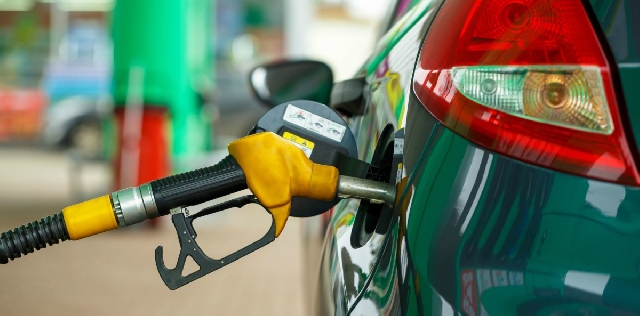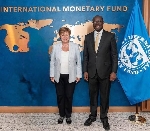IES projects 5%, 4% hike in petrol, diesel prices with LPG falling by 8%
 The prices of gasoline and gasoil are projected to increase further by about 5% and 4%, respectively
The prices of gasoline and gasoil are projected to increase further by about 5% and 4%, respectively
International market changes resulting from geopolitical tensions in the Middle East and the decision of OPEC+ to cut oil production among other factors, have caused a hike in crude oil prices, a situation that would influence the prices of refined products in the coming weeks, the Institute of Energy Security has said.
In its latest update, IES said the prices of liquid fuels have continued to rise in a row over the past two pricing windows with the first pricing window in April recording 7.27% and 0.69%, respectively.
The update, signed by Research Analyst Adam Yakubu, said: "Ghana’s economic turmoil continues to put pressure on the local currency, leading to its persistent depreciation since February 2024 with the latest being 2.43% in the first pricing window of April"
Also, IES indicated that national policy changes and directives from the National Petroleum Authority (NPA) have affected the local market in the last pricing period and it is "likely to continue in the second half of April as some OMCs attempt to incorporate the new changes to their operations".
It said that going into the second half of April, gasoline and gasoil prices are projected to increase further by about 5% and 4%, respectively, due to international market dynamics and poor performance of the local currency.
LPG, in contrast, could see its users enjoy some price cuts by about 8% in the coming days in April 2024.
Read the rest of the IES update below:
Local fuel market performance
In April, the first pricing window saw the domestic fuel market experience turbulence spanning from regulatory directives and international market dynamics.
The National Petroleum Authority reversed an earlier decision to suspend the price stabilisation levy as a component of the price
build-up for refined petroleum products.
In reaction to the above decision, Oil Marketing Companies (OMCs) reviewed prices upward after an earlier increase due to market dynamics of international price movements and a depreciating local currency.
Monitoring activities on the local fuel market revealed that some OMCs had increased prices twice within 24 hours.
The average price increase for gasoil for the period under review was GHC0.25, whereas gasoline was GHC0.30, and the liquified Petroleum gas price remained unchanged.
The Institute for Energy Security (IES) computation of the national average price for the 3 refined petroleum products over the past two weeks indicates gasoline sells at GHC13.54, Gasoil GHC14.26 per litre respectively, and Liquefied Petroleum Gas (LPG) sells at GHC13.65 per kilogramme (kg).
The IES Marketscan positions Star Oil, Zen Petroleum, and Benab Oil as OMCs selling at least priced over the last two weeks.
World Oil Market
Industry leaders and hedge fund managers say the OPEC+ group has taken firm control of the oil market and could make it extremely tight in the second half of the year should it so choose.
The market is becoming more and more bullish on oil, anticipating strong growth in global demand as well as supply constraints such as production restrictions by Russia and OPEC that will drive prices further higher in the summer.
Investment banks say there is potential for more upsides given tighter markets and elevated geopolitical threats, with Brent oil prices breaking above $90 per barrel.
They do not rule out $100 oil this year.
Brent oil price over the first pricing window saw significant improvement in price crossing to trade within $90 regions for most of the period.
At the close of trade on 11th April 2024, the commodity traded at $89.74 per barrel with a bi-weekly average of $89.19 per barrel.
World Fuel Market
The Global Standard & Poor (S&P) Platts monitoring of refined petroleum products posted the following closing price for the first pricing window for April 2024: Gasoline $937.68, Gasoil $841.38, and LPG $517.38, per metric tonne respectively.
The new price movement reflects a net effect of 7.27% and 0.69% increment in the price per metric tonne for Gasoline and Gasoil respectively, on the other hand, LPG price fell by a whopping 17.52%, being the second product price recording such an effect in recent time.
Local Forex
IES Economic Desk monitoring of Ghana cedi performance in the first 2 weeks of April on the foreign exchange (Forex) shows that the local currency is still underperforming against the U.S. Dollar.
The Ghana Cedi previously traded at GHC13.06 to its counterpart but closed trade at GHC13.38, representing a loss of 2.43% depreciation of its value.
Source: Classfmonline.com
Trending Business

GOLDBOD Jewellery unveils festive Christmas and New Year collections
18:17
Importers and Exporters Association kick against planned introduction of AI system at Ghana's ports
11:47
TDC unveils vision for Oxygen City development in Ho
09:59
First Atlantic Bank PLC marks major milestone with oversubscribed IPO and upcoming GSE listing
08:51
IMF unlocks US$380 million disbursement for Ghana under ECF
00:42
GIPC boss outlines government’s key economic priorities for 2026
15:40
GIPC call stronger investment partnership with Suriname
15:32
Non-performing energy sector heads to be sacked -Energy Minister warns
13:14
Insurance brokers do not face trust issues with insurers – Shalbu Ali
12:11
IBAG reflects on a “mixed year” as industry records major wins
11:46



